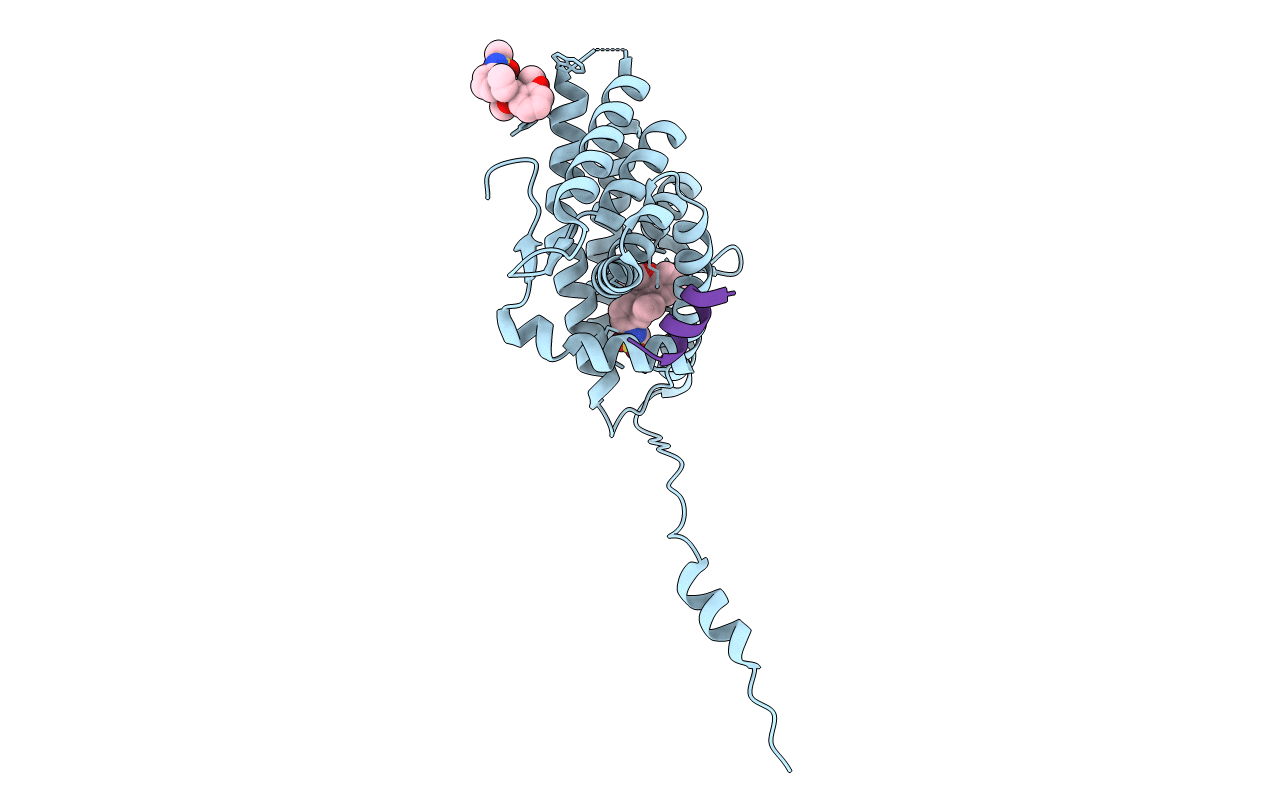
Deposition Date
2013-07-22
Release Date
2014-01-29
Last Version Date
2024-02-28
Entry Detail
PDB ID:
4LSJ
Keywords:
Title:
Crystal Structure of the Glucocorticoid Receptor Ligand Binding Domain Bound to a Dibenzoxapine Sulfonamide
Biological Source:
Source Organism:
Homo sapiens (Taxon ID: 9606)
Host Organism:
Method Details:
Experimental Method:
Resolution:
2.35 Å
R-Value Free:
0.23
R-Value Work:
0.17
R-Value Observed:
0.18
Space Group:
P 21 21 2


